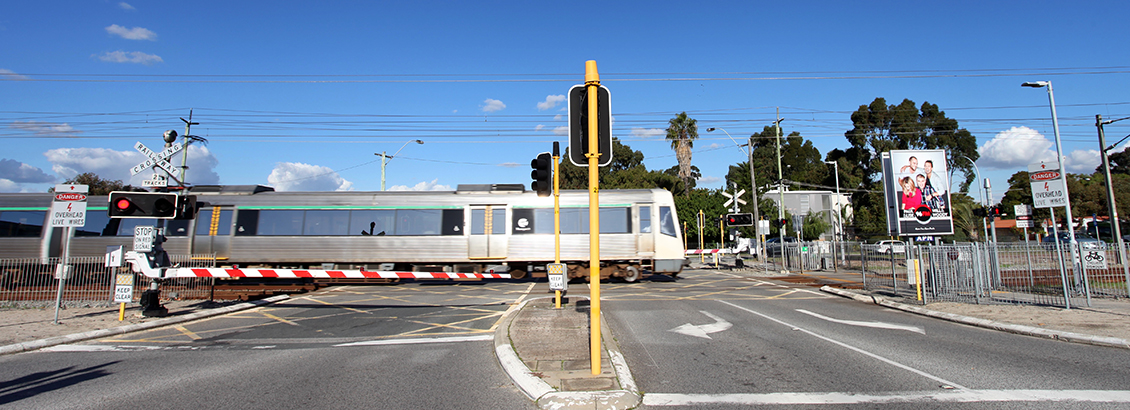
Railway level crossings can be dangerous. A train moving at high speed cannot stop quickly. Level crossing incidents carry a significant risk of serious injury or death, which is why warning signs and signals are in place to keep everyone safe.
Level crossings on our network are protected by:
- Flashing lights (visual warning)
- Boom gates (physical barrier)
- Bells (audible warning)
- Warning signs
- Stop or Give Way signage
- Pedestrian crossing gates
- Crosshatch exclusion zone
All pedestrian crossings in the Public Transport Authority network are protected by:
- Flashing lights (visual warning)
- Bells (audible warning)
- Pedestrian gates (physical barrier) in electrified areas.
It’s important that pedestrians and motorists obey these warning signs and signals to avoid incidents and save lives.
Safety tips at level crossings
- When approaching a level crossing, slow down to a speed which allows you to stop quickly.
- You must stop at a crossing if:
- There is a stop sign
- Red lights are flashing
- The boom arm is in the lowered position
- The pedestrian gate is closed
- A traffic controller or emergency services personnel signals you to do so
- Be aware of your surroundings
- Avoid distractions when crossing, such as mobile phones and headphones
- Only enter the crossing when the lights have stopped flashing. Never assume that it’s safe to cross when the lights are still flashing. Another train may be approaching from the other direction, even if the boom arms are raising
- Ensure the way is clear on the other side to avoid getting caught
- Never queue in your vehicle through a crossing
- Always use the pedestrian walkway and only enter the crossing when the pedestrian gate is open
- Never ride bicycles, skateboards, skates or rollerblades across any pedestrian crossing.